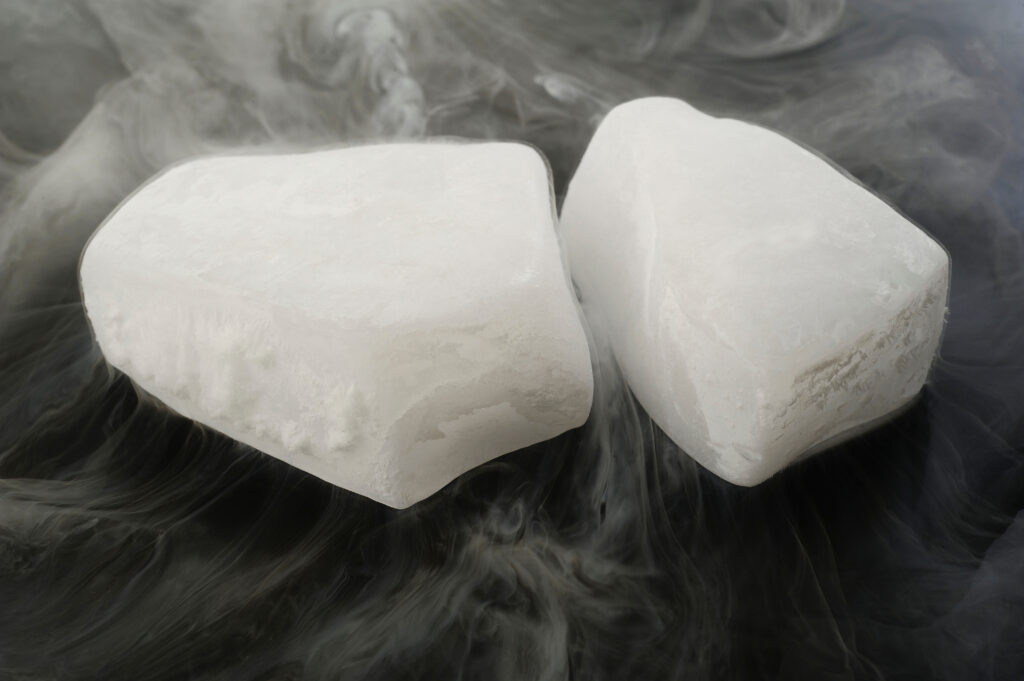If you want something to be colder than ice then dry ice is a great solution. It can be used for refrigeration, blast freezing, science experiments, halloween foggy drinks and much more! The only question that remains is whether or not dry ice is too expensive to be considered reasonable.
Dry ice is not very expensive. At most grocery stores and supermarkets (such as Walmart), dry ice costs anywhere between $1-$3 per pound. For commercial quantities dry ice usually costs less than $0.50/pound and it is usually purchased in blocks or pellets.
There's a lot more to buying and using dry ice than you might think. Below you will find some tips on where to purchase your ice, handling dry ice safely, what equipment you may need, and more. This should help ease your mind and answer any questions you might have.
Dry Ice: The Cost and Where to Find
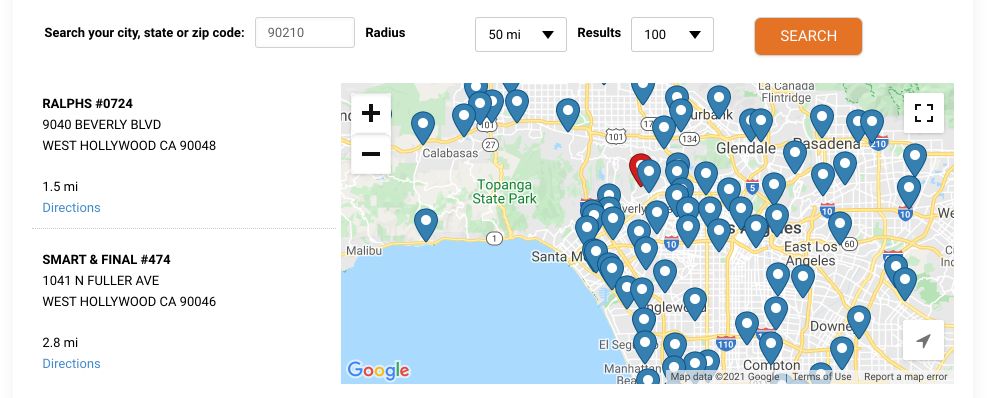
Most stores and supermarkets sell dry ice blocks for anywhere between $1 and $3 per pound. It can
Because most people don't need a whole lot of dry ice in one sitting, this is a fairly reasonable price to pay. You shouldn't need to go very far to find all the dry ice you'll need.
The prices vary depending on where you get it and in what form. Dry ice blocks are usually more expensive than dry ice pellets. There are many grocery stores you can find dry ice at, but different stores get dry ice from different places, so the prices are similar, but not exactly the same. Call ahead and see if your local grocery store has dry ice on hand and how much they sell it for.
You can usually find dry ice from Fred Meyer, King Soopers, Meijer, Winco, Vons, Ralphs, Safeway, Whole Foods, and Albertsons. And don't worry about trying to find dry ice during the “off-season.” People don't only use it on Halloween or during the summer—it is carried all year round in many stores.
What Stores Sell Dry Ice and For How Much?
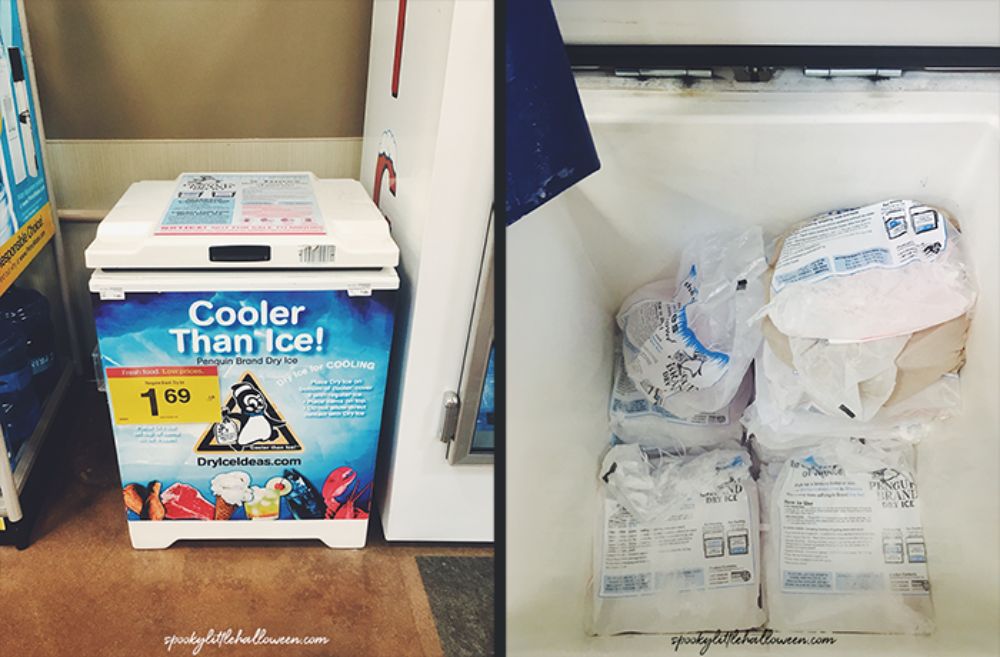
We've done extensive research into many of the popular local supermarkets to see whether or not they stock dry ice and approximately how much you can expect to pay.
Prices and availabilities do vary from location to location and season to season so it's always a good idea to call ahead to see if your local store has stock.
| Store (Click link for more details) | Do They Sell Dry Ice? | Approx Cost Of Dry Ice (per pound) |
|---|---|---|
| Walmart | YES | $0.99-$2 |
| Publix | YES | $1.50-$2 |
| Kroger | YES | $0.99-$2 |
| HEB | YES | $1-$4 |
| Meijer | YES | $2.39-$3 |
| Costco | NO | N/A |
| Whole Foods | YES | $1-$2.99 |
| Winco | YES | $1.98 |
| Albertsons | YES | $1.49-$3 |
| Ralphs | YES | $1.69-$3.99 |
| Vons | YES | $1.99 |
| Aldi | YES | $1-$3 |
| Target | NO | N/A |
| Giant | NO | N/A |
| Fred Meyer | YES | $1.69-$3 |
| King Soopers | YES | $1.69 |
| Safeway | NO | N/A |
Can You Buy Dry Ice Online?
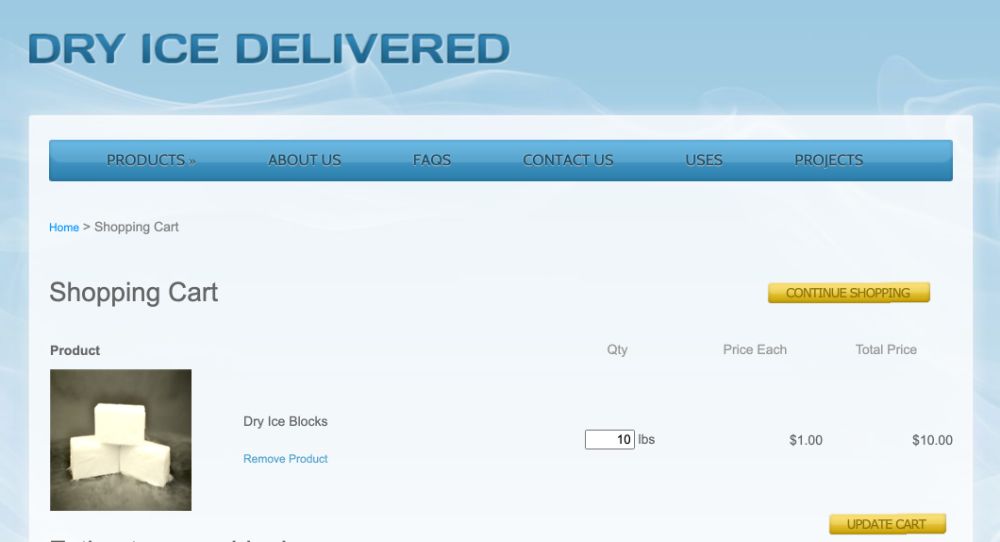
Luckily, if you can't find any dry ice locally, you can always buy it online!
For example, in the Bay Area, Ben's Dry Ice sells and delivers dry ice pellets for super cheap, and the more you buy, the cheaper it gets! You can buy 50 pounds for $2 a pound, or you can buy 150 pounds or more for just $1.25 per pound! If you need a lot of dry ice, this is a great way to go.
If dry ice pellets aren't what you want, Ben's Dry Ice also sells and delivers their ice in blocks. And again, the more of it you buy, the cheaper it becomes to purchase!
| Order Amount | Price Per Pound |
|---|---|
| 10 lbs | $6 |
| 20 lbs | $4 |
| 30 lbs | $3 |
| 40 lbs | $2.38 |
| 50-90 lbs | $2 |
| 100-140 lbs | $1.50 |
| 150+ lbs | $1.25 |
Alternatively Dry Ice Delivered ships dry ice all over the country and it only costs $0.05-$1.00/pound.
However the closer you are to their location in Baton Rouge, Louisiana the cheaper shipping costs will be and if you're far away the shipping costs get ridiculously expensive. More details on where to buy dry ice.
How Much Is a 10lb Bag of Dry Ice?
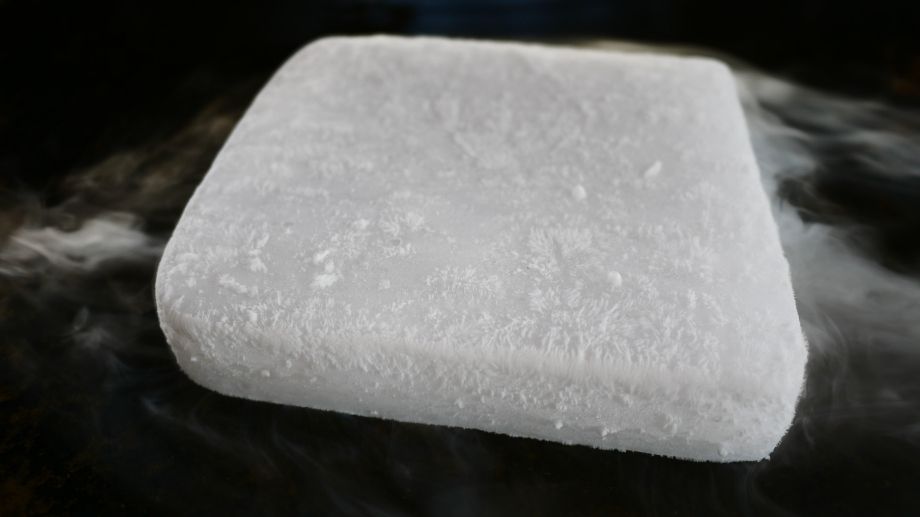
A 10lb bag of dry ice is roughly 10″ x 10″ x 2″ will cost between $5.00-$30.00 ($0.50-$3.00/lb) depending on where you buy it from. 10 lb bags of dry ice can be purchased from commercial suppliers or large supermarkets like Walmart and Krogers.
How Much Does 50 Pounds of Dry Ice Cost?

When buying dry ice in bulk the price tends to go down. 50 pounds of dry ice will likely cost around $25-$50 ($0.50-$1.00 per pound) if purchasing from a local supplier but it can be as expensive as $150 ($3 per pound) in some areas or from some suppliers.
Whether you want the dry ice in large block or in pellet form and how far the dry ice needs to be delivered can also affect pricing. Picking up dry ice from your local supplier is almost always cheaper than having it delivered to you which can incur quite a large expensive in shipping fees.
Is It Cheaper To Buy or Make Dry Ice
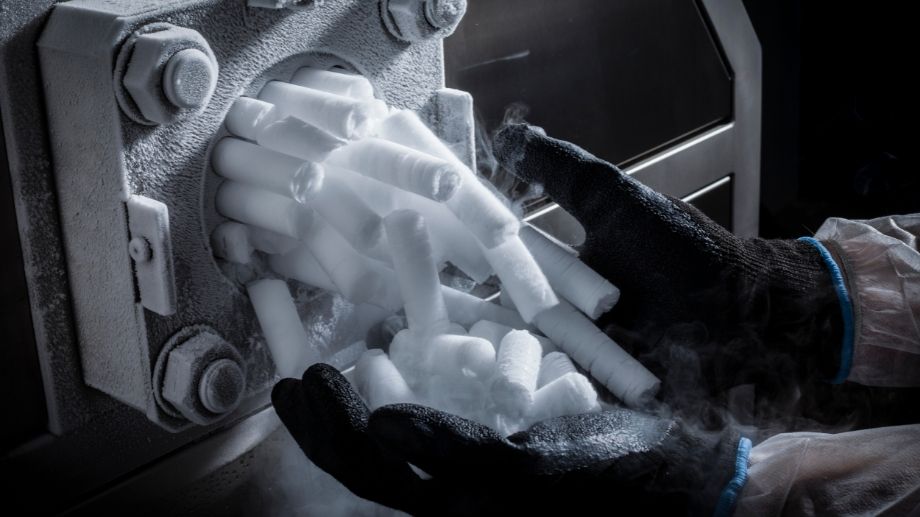
For the average consumer or business it is much cheaper to buy dry ice than to make it yourself. This is due to the large capital investment it takes to manufacture dry ice as well as operating costs and losses in CO2 vapor in less efficient productions.
The only time it is going to be cheaper to make dry ice yourself is if you have no stores near you that stock it or you are in a location where it is hard to receive dry ice or you have no local suppliers.
Long distance shipping of dry ice is very expensive and much of the dry ice can sublimate or turn to gas before it arrives to you giving you a lower yield at a greater cost. Learn more about how long dry ice lasts for shipping.
Is Making Dry Ice Expensive?
The capital expenditure for the machinery required to make dry ice is expensive to purchase. Once purchased it is not expensive to make dry ice but there is still maintenance and operating costs associated with making dry ice.
Making dry ice at home is ver expensive as you need to use a fire hydrant to blow the liquid CO2 into a bag. Much of the liquid CO2 will turn to gas and escape but some will get cold enough to turn into dry ice snow when you can then compress it and use it.
This method is an extremely wasteful way of making CO2 and only gives you small quantities and it's very expensive.
Dry ice is sold for as low as $0.50 per pound or even less in large commercial quantities and this is sold with a profit margin on top so the dry ice manufacturer can make money. This also needs to account for staffing, machinery cost and maintenance as well as losses from manufacturing and the storing of dry ice.
This means it costs less than $0.50 per pound to make and manufacture dry ice in large quantities. However, exactly how cheap per pound it is to make dry ice I'm not sure.
How To Save Money On Dry Ice
To save money on dry ice buy it from a local supplier right before you need it, buy in large blocks (not pellets) and purchase it in larger quantities to get a cheaper price. Store your dry ice in a high-end cooler so you lose as little dry ice as possible to sublimation.
Where Is The Cheapest Place To Buy Dry Ice?
The cheapest place to buy ice is from a local commercial supplier where you can get it for $0.50/pound or less in large quantities. For smaller quantities Walmart, Kroger, HEB, Whole Foods and Aldi sometimes sell dry ice for as low as $0.99-$1 per pound.
Dry ice demand can be seasonal with Halloween and the summer months being some of the most popular times to purchase dry ice. So supply and pricing can fluctuate on a regular basis.
Is Dry Ice Cheaper Than Regular Ice?
Dry ice is more expensive than regular ice. Dry ice costs $1-$3/pound whereas regular ice will usually cost around $0.20-$0.40/pound. A 20 pound bag of regular ice is $3.88 at Walmart whereas the same quantity of dry ice will cost you between $20-$60.
Why Is Dry Ice More Expensive Than Regular Ice?
Regular ice is much cheaper to make and can be stored for prolonged periods of time in a freezer. Dry ice is harder and more expensive to make and it can't be stored in freezers, only coolers which is why it is more expensive to consumers.
Dry ice sublimates (or turns to gas) over time and so the longer you store dry ice the more of it you lose, which again adds to the cost of dry ice for consumers.
Regular ice easier to make and store
Is Making Dry Ice Expensive?
Dry ice isn't expensive to make in large quantities but the upfront capital cost of machinery plus ongoing maintenance and operating costs means it needs to be made in bulk to be cost effective. Dry ice is usually quite expensive to make in small quantities.
To make dry ice you first need to get carbon dioxide (usually sourced as waste from other manufacturing processes), purify it and then compress it into liquid.
You then need to decompress the liquid CO2 in a chamber where it will super cool and turn into dry ice snow. You also want to capture and recompress as much of the CO2 gases as you can to avoid wastage.
Once you have dry ice snow you'll then need to use machines to compact the dry ice into pellets or blocks to be sold to other businesses or consumers. All up it's a pretty big operation to make dry ice. Click here to learn the full details about how dry ice is made.
Tools You Need To Handle and Use Dry Ice
Now that you know more about how much dry ice tends to cost, let's talk about what you need to safely handle your dry ice.
Unlike regular ice, dry ice is carbon dioxide frozen solid. It's a lot more dangerous to deal with, so it would stand to reason that there are a few tools you'll need to protect yourself from burns, etc.
First, you'll want to use some gloves. Plastic or rubber gloves are okay for quick handling of dry ice but they won't protect your hands very well, so it would be better if you had something thicker.
Leather gloves are always recommended because they will always protect your hands. However, if you don't have access to leather gloves, something as simple as an oven mitt will do just fine. Thick, latex-coated gloves are excellent for handling dry ice.
You will also need an ice cooler. You can use a regular cooler, but dry ice can crack a plastic cooler if it just sits at the bottom. Buying an insulated foam cooler is one of the best ways to go. The better the cooler you get the longer the dry ice will last. I've made a full list of the best coolers for dry ice if you're looking for the best options out there.
Depending on how much ice you're handling, you might also want to wear eye protection and arm protection. Wear thick clothes and long sleeves when you're transporting ice as well as a pair of safety goggles. Use your best judgment, and you'll be completely fine!
You might also want to use some tongs. Tongs will somewhat decrease the need for gloves, but wearing gloves, all the same, is not a bad thing because you'll still want to protect your hands. Tongs will make handling the ice much easier and much safer too!

Safety Practices with Dry Ice
Because dry ice is not the same as regular ice, you're going to need to be extra careful when you handle it. Aside from using the proper tools, you will need to exercise a few practices that will prevent you from sustaining any injuries.
Again, protect yourself properly. If you allow dry ice to be in contact with your skin for too long, you're going to end up burning yourself. If that happens, you'll need to treat the burn as you would frostbite or a regular burn. Protect yourself, and there's nothing you'll need to worry about.
When you're transporting the ice from the store to your house, you will want to keep some windows down or have air circulating some other way. Since dry ice is just frozen carbon dioxide, it's not going to liquefy when it melts, but rather it will revert to a gaseous form. Inhaling carbon dioxide fumes isn't exactly healthy, so keep the air circulating!
Don't ever ingest dry ice. Because it can cause freezer burn and sometimes even frostbite, ingesting it is one of the worst things you could do for your body. You should also keep it away from the hands of little kids that could potentially burn themselves or that might want to put it in their mouths. They can enjoy the effects of the dry ice, just make sure they do it from afar!
Avoid keeping dry ice in airtight containers! When it starts to melt and revert to a gas, it can pressurize pretty quickly, which will then lead to a potential “explosion.” This could cause damage to property or injury to you and whoever might be with you at the time. Be careful how and where you store your ice!

